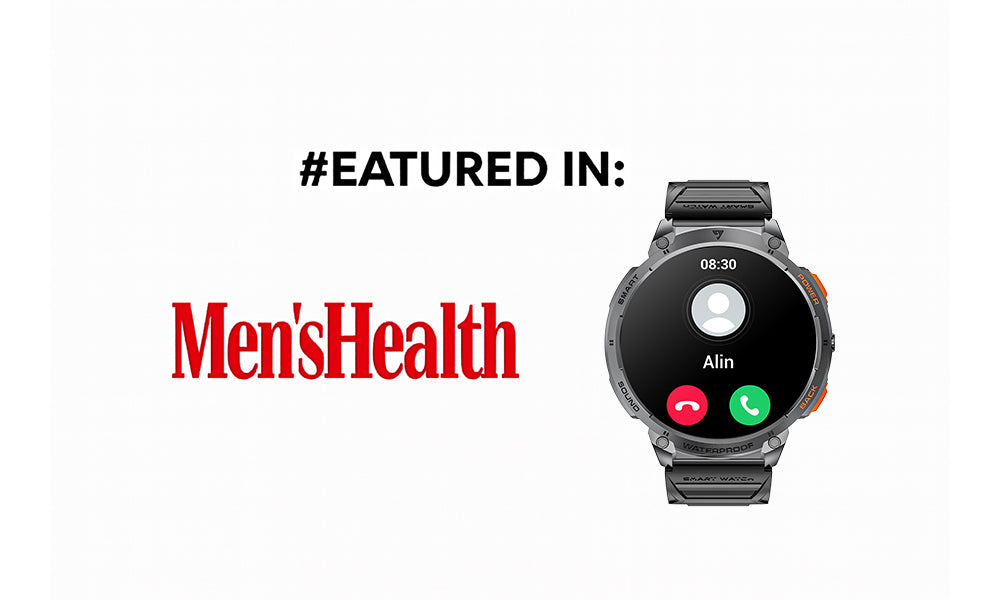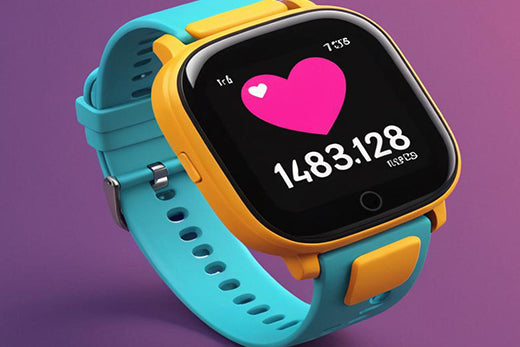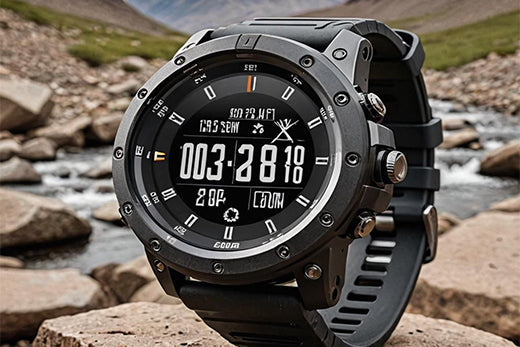In the fast-paced modern life, health has become one of the focuses of people's attention. As a tool for monitoring physical health, heart rate monitoring watches are essential for preventing diseases and improving the quality of life.
What Is a Heart Rate Monitor Watch?
A heart rate monitor watch is a wearable device designed to measure and display your heart rate continuously or on demand. Most use optical sensors (PPG — photoplethysmography) that shine light into your skin and detect changes in blood flow.
Unlike old-school chest straps, modern heart rate watches are comfortable, lightweight, and discreet — ideal for 24/7 wear.
How accurate are heart rate monitor watches?
The accuracy of heart rate monitoring watches depends on various factors, including the technology used, usage scenarios, wearing methods, and algorithmic optimization. Here’s a detailed breakdown:
1. Technology Types and Principles
-
Optical Heart Rate Monitoring (PPG)
Most smartwatches use Photoplethysmography (PPG), which emits green or red light to detect blood flow changes under the skin.- Advantages: Non-invasive, continuous monitoring.
-
Limitations:
- Prone to errors during high-intensity activities (e.g., HIIT) due to arm movement or sweat.
- Dark skin, tattoos, or body hair may interfere with light absorption.
- Reduced accuracy in cold environments due to weaker blood flow.
-
Electrical Signal Monitoring (ECG)
Some premium watches (e.g., Apple Watch, Huawei Watch GT series) support ECG via electrodes to measure electrical heart signals.- Advantages: Near-medical-grade accuracy, especially for static heart rate measurement.
- Limitations: Provides only spot measurements, not continuous tracking during movement.
2. Accuracy Across Scenarios
-
Resting State:
Both PPG and ECG are highly accurate, with errors typically within ±2 BPM (compared to medical devices). -
Low-Intensity Exercise (e.g., walking, jogging):
PPG performs well, with errors around ±5 BPM. -
High-Intensity Exercise (e.g., HIIT, boxing):
Optical sensors may show larger deviations (errors up to ±10 BPM+). Chest-strap monitors are more reliable here. -
Swimming/Water Activities:
Some waterproof watches (e.g., Garmin, Polar) work well, but water flow can affect optical sensor data.
3. Key Factors Affecting Accuracy
-
Wearing Method:
The watch must fit snugly, ideally 2-3 cm above the wrist bone. Loose or tight placement causes errors. -
Individual Differences:
Skin tone, body fat percentage, and blood circulation can impact optical sensor performance. -
Algorithm Optimization:
Brand-specific algorithms (e.g., Apple’s AI correction, Garmin’s Elevate technology) significantly refine results.
4. Accuracy Comparison of Major Brands
-
Medically Certified Devices:
Apple Watch (FDA-cleared ECG) and Withings ScanWatch (CE-certified) offer near-professional accuracy for resting heart rates. -
Sports Performance:
Garmin and Polar optical sensors show stable results during exercise, while budget bands (e.g., Xiaomi, Fitbit basics) may lag in accuracy. -
Research Data:
- A Journal of the American College of Cardiology study found Apple Watch’s optical heart rate error to be ~2%.
- Journal of Sports Medicine tests showed Garmin Fenix series errors at ~3-5% during high-intensity workouts.
5. Tips to Improve Accuracy
- Keep the watch clean to avoid sweat or dirt blocking the sensor.
- Disable auto-brightness during workouts to reduce power interference.
- Cross-validate with a chest-strap monitor (e.g., Polar H10).
- Avoid extreme temperatures or overly tight wearing.
Answer
- Daily Use: Optical sensors in mainstream watches are sufficiently accurate for health tracking and casual exercise.
- Medical Purposes: Use certified ECG devices as supplementary tools, not replacements for professional medical equipment.
- Athletic Training: High-intensity athletes should pair with chest-strap monitors.
Heart Rate Watch vs. Chest Strap: Which Is Better?
| Feature | Heart Rate Watch | Chest Strap |
|---|---|---|
| Comfort | High (wrist-based) | Low (chest-based, can chafe) |
| Convenience | 24/7 wearable | Best for workouts only |
| Accuracy | Good (latest sensors) | Excellent (gold standard) |
| Battery Life | Long (especially Mingdaln) | Long |
| Best For | General users & athletes | High-intensity athletes |
Recommend Mingdaln K68 smartwatch

While many big-name brands focus on style over function, Mingdaln takes a different approach: durability, precision, and value.
Here’s why fitness enthusiasts, outdoor adventurers, and health-focused users love Mingdaln:
-
✅ Accurate heart rate sensors with real-time monitoring
-
💧 IP68 waterproofing — wear it in the rain, pool, or sweat-heavy workouts
-
🔋 Long battery life — up to 14 days of regular use
-
📱 Bluetooth calling & smart notifications
-
💡 Extra features like LED flashlight, sleep tracking, and blood pressure monitoring
Real-World Use Cases
🧑💼 For Professionals
Busy lifestyle? A heart rate monitor watch helps you recognize when your stress levels spike and reminds you to pause or breathe. It’s a simple way to protect your long-term heart health without disrupting your workflow.
🧓 For Seniors
Heart rate irregularities often go unnoticed. For seniors, wearing a health watch that tracks and stores heart data can be a valuable early warning system — and a great conversation starter with their physician.
🏃 For Fitness Junkies
Using heart rate zones to structure training helps avoid overtraining, improves VO2 max, and optimizes fat-burning sessions. Whether you're running 5Ks or powerlifting, heart rate data can fine-tune your results.
Conclusion
As the new favorite in the smart wearable device market, heart rate monitoring watches have won the favor of more and more consumers with their accurate monitoring, multi-functional applications and fashionable appearance. However, we need to be rational about their limitations, especially when health abnormalities occur, and professional medical tests should be used as the standard.





Leave a comment
This site is protected by hCaptcha and the hCaptcha Privacy Policy and Terms of Service apply.